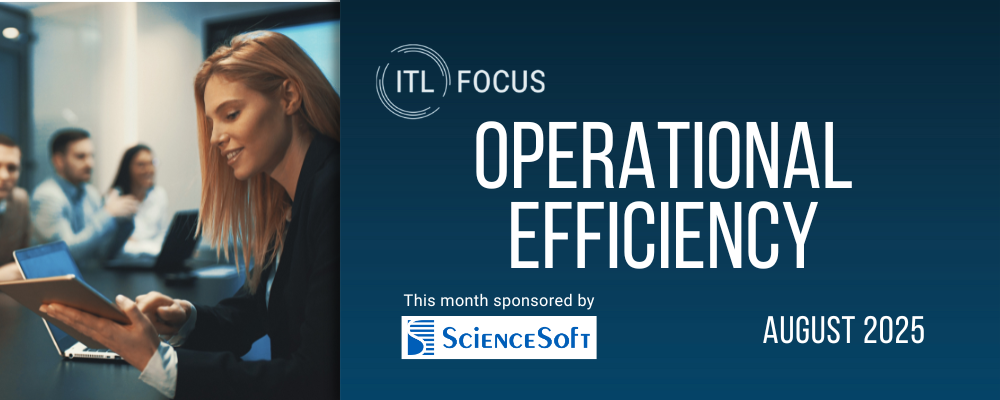From destructive wildfires and hurricanes to epic snowstorms and floods, 2023 was the worst year on record for billion-dollar disasters. Natural disasters are not only happening more often, but they are also more severe, devastating homeowners and driving up insurance rates. People who live in Lake Arrowhead, California, for instance, pay high premiums because the city is considered at high risk from wildfires and earthquakes. This is the same area where homeowners and tourists were trapped by a severe snowstorm last winter.
The increase in natural disasters is a major contributor to the challenges facing the insurance industry. There is also a widening gap in health insurance coverage, retirement savings and life insurance -- adding up to a $1.4 trillion shortfall in coverage in the U.S.
With today's digitally savvy consumers, many insurance companies have started their digital journey with AI and data analytics through intelligent automation (IA), business process management (BPM), chatbots and customer experience (CX) portals to meet customer and market demands for speed and convenience at low costs. Many insurance companies are also using new underwriting models and distribution channels to appeal to new customers.
While the increase in adoption of AI-driven policy calculators and application processes demonstrates a shift in mindset for the industry, some firms struggle with implementing a comprehensive approach to using advanced technologies. According to a recent Deloitte survey, of 100 U.S. life insurance and annuity chief information officers whose firms have begun their core system modernization, fewer than a third have completed some (20%) or all (12%) of their initiatives. Just over two-thirds have projects currently underway or in the planning stage.
Intelligent automation provides an enterprise road map to more efficient business processes while enabling insurers to offer personalization of services to attract and retain customers by enhancing the customer experience. AI and BPM are key ingredients of intelligent automation, along with robotic process automation (RPA) and other complementary technologies that can enact change for your organization.
Intelligent automation creates efficiencies using your existing structure and systems, while lifting the burden from your workforce and allowing employees to focus on work with more impact.
Technologies designed to work together are key to achieving the productivity gains promised by digital transformation. There are three steps you can take to help you navigate and understand these technologies, see how they fit into your operation and deploy a model of best practices for implementation.
See also: Automation 2.0: What's After RPA
Step 1
Establish an ideal outcome and return on investment (ROI) target for your intelligent automation, whether that be revenue, cost savings, error reduction, employee satisfaction, customer experience or compliance. Once you have your objective clearly laid out, it will be easier to deploy your automation where it will be most effective.
It is important to have a robust strategy that empowers employees from business and IT to work together to deliver a clear plan. The Gartner Avoiding the 10 Most Common Mistakes in Financial Services Automation report provides insights into how financial services companies can achieve long-term value from their investments. A digital operations center of excellence is essential for a structured approach to automation because it focuses on governance, technology selection and choosing the right automation to deliver business outcomes.
Step 2
Identify bottlenecks or inefficiencies in your operations. One way is through process mining, which analyzes your current processes to determine where improvements can be made. From there, you will be able to set goals, from the quick wins of routine task automation to the orchestration of long-running processes and augmenting intelligent decision-making capabilities to evolve those processes.
Step 3
Deploy an automation operating model, ROM2, that meets your business change management needs to scale automation and orchestration. Using proven methodologies and orchestration management empowers you to establish a solid foundation that enables you to customize, sustain and expand your intelligent automation program. With BPM and RPA, you can coordinate processes and avoid human errors during manual data input, which is especially important in financial services. Errors can cost you and your customers money and lost investment opportunities.
BPM excels at orchestration, but it cannot directly interact with legacy systems. RPA, on the other hand, is great at automating any user interface but struggles with long-term case management. Combining the two creates a complete solution that can tackle end-to-end processes. Robotic process automations are managed with BPM software, using automation wherever possible.
Humans are still accountable to ensure they sign off with the BPM system's delegation and coordination of tasks and processes across human and digital workers. The operational transformation will reverberate across the organization because of the scalability of BPM and RPA used in tandem within an intelligent automation platform.
This setup positions you to manage roles and rules while gathering insights on operational analytics. With both, your business model will mature and help guide you in everything from efficiency to enrichment to total reinvention.
See also: Digital Self-Service Is Transforming Insurance
Manage and mitigate financial risk
There are many reasons why insurers are looking to harness the power of automation and digitization to become more agile and achieve economies of scale. As natural disasters such as hurricanes increase in intensity, it becomes more difficult to predict how severely places will be affected, and officials and residents have little time to prepare. In addition, with diminishing investment returns, vast workflows and growing data volumes, competitive encroachment from non-traditional players, changing customer expectations and rapid advancement of new technologies, it is clear the insurance marketplace is transforming and is looking for digital advancements.
Service diversification is also required as a preventative measure to help reduce customer risk and build customer loyalty, while safeguarding reputations. Intelligent automation platforms and tools enable organizations to improve employee effectiveness and deliver a differentiated customer experience. They help you target strategic priorities, close the digital gap, unlock the full potential of orchestration and digital workers to deliver the necessary transformational business value needed today.






